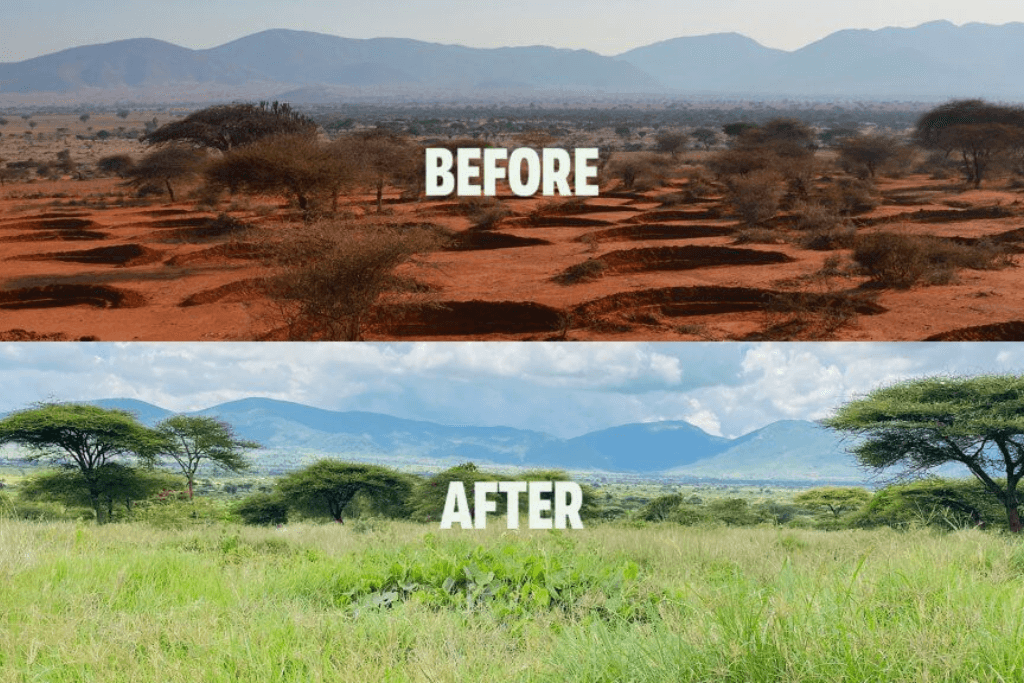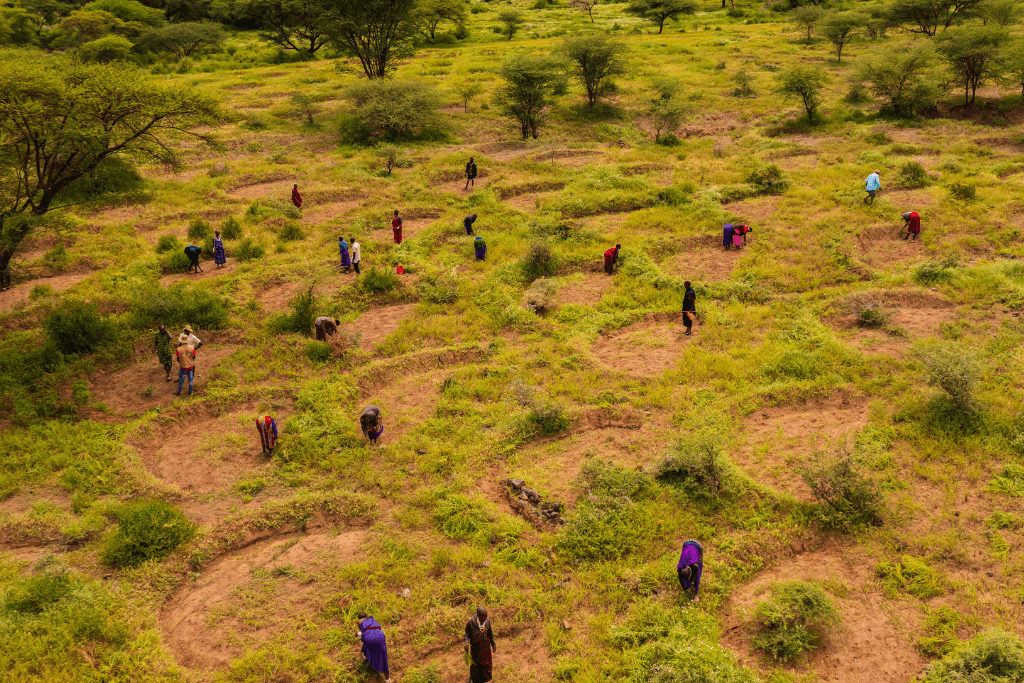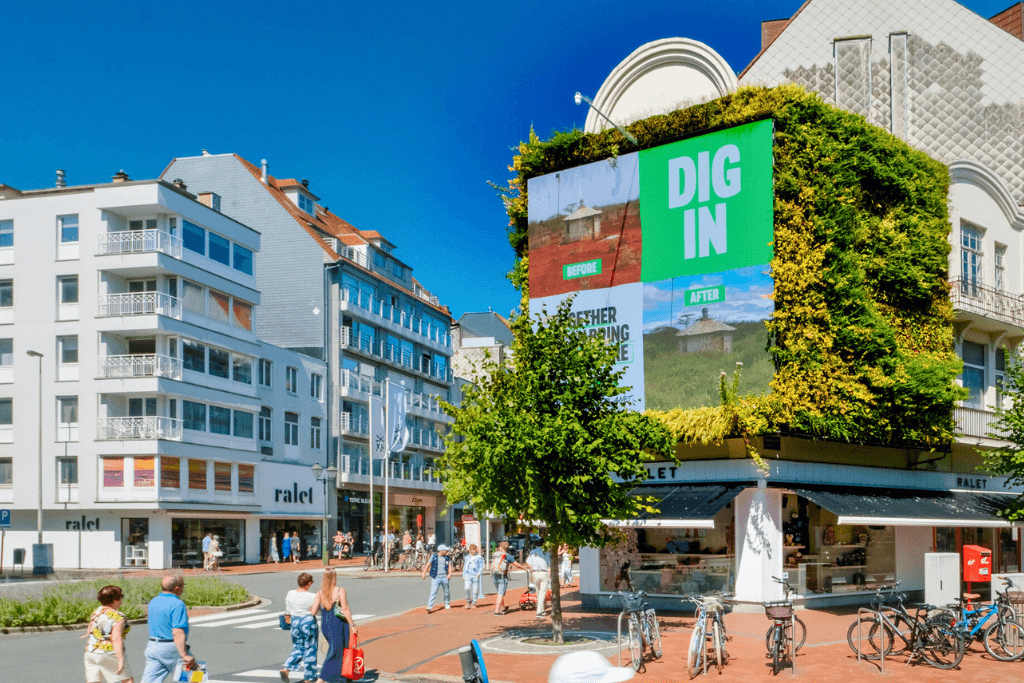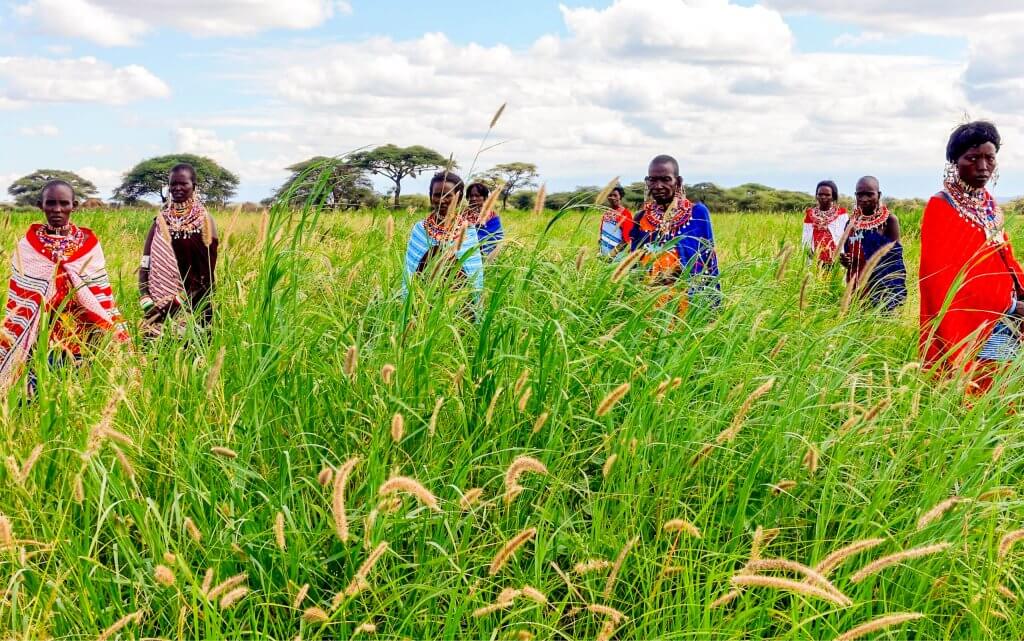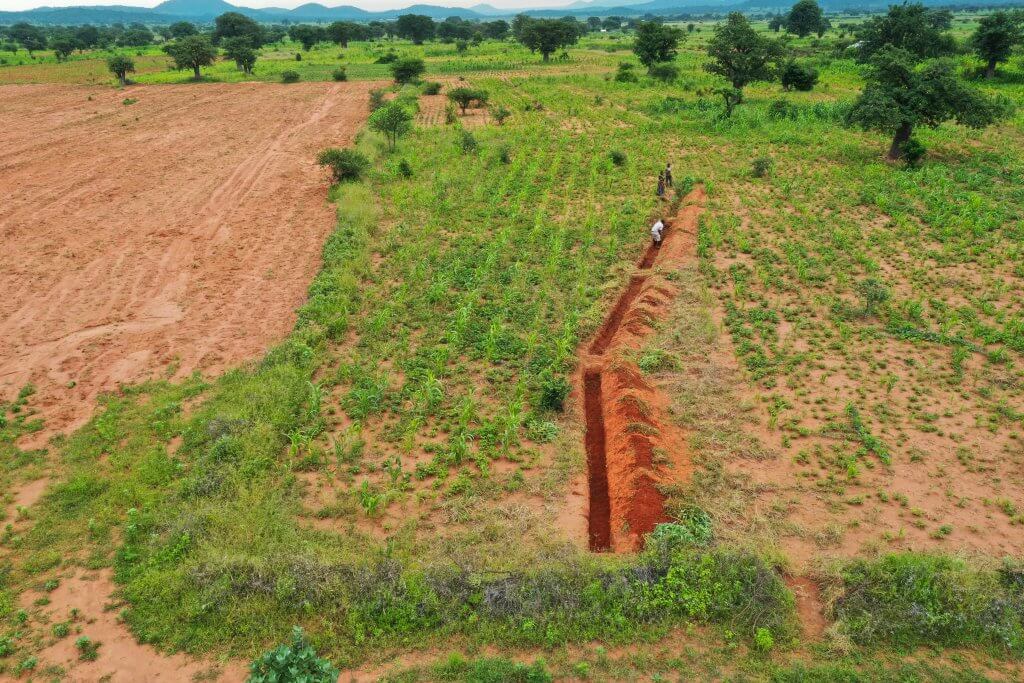Water bunds Landscape restoration
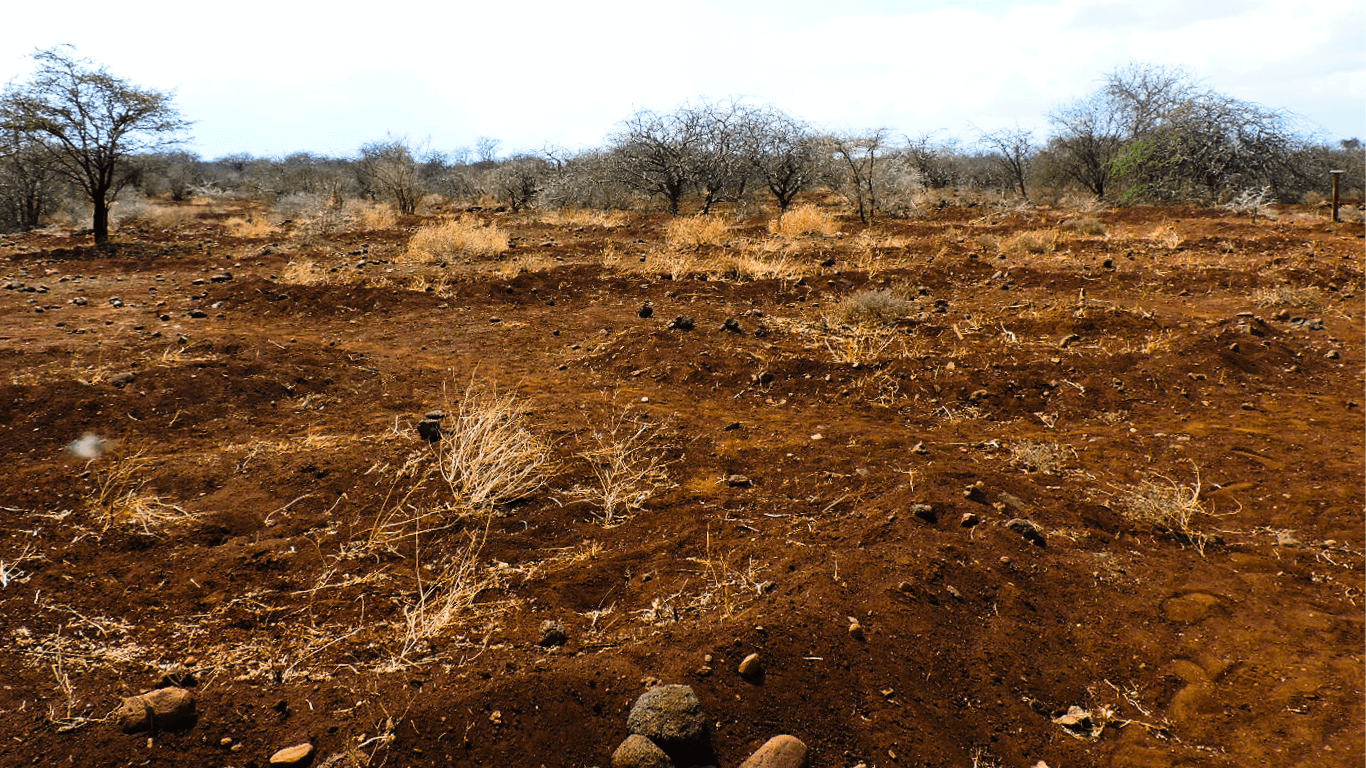
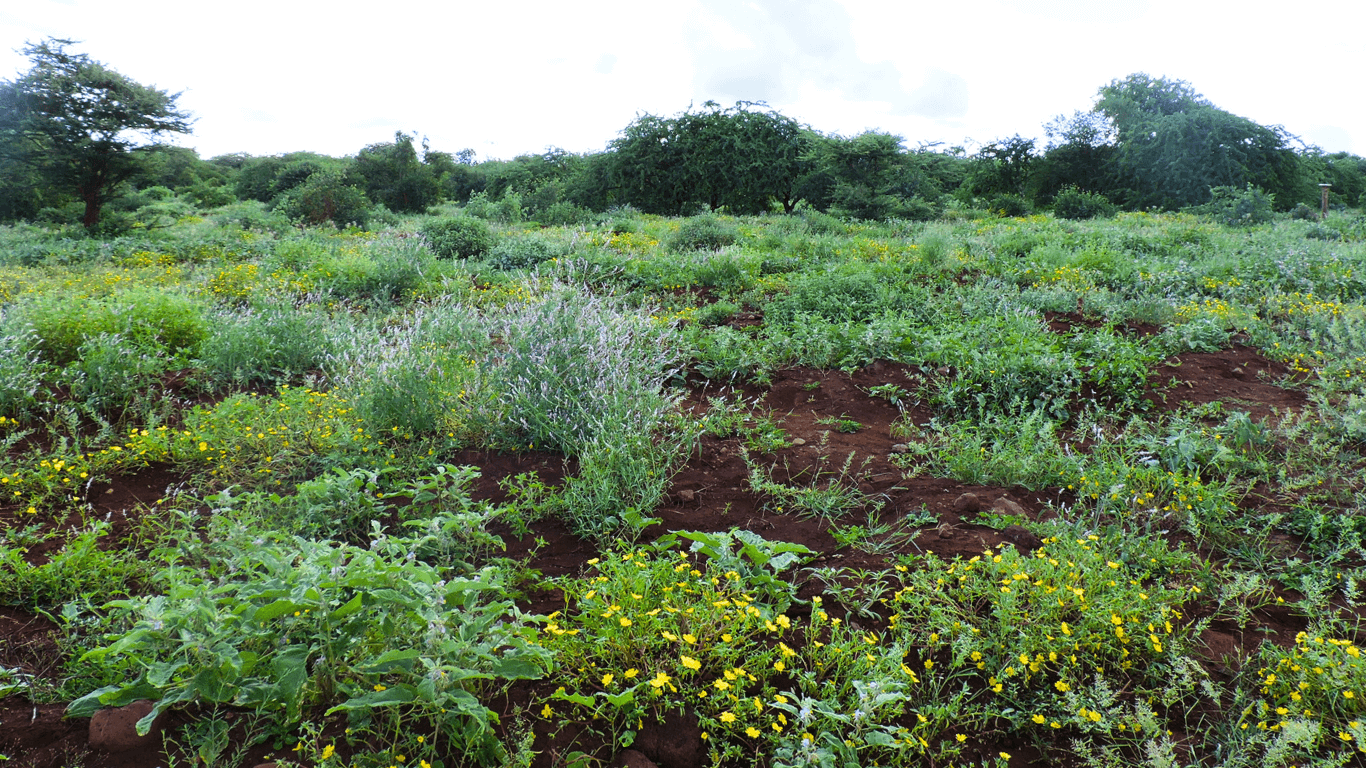
Why we dig
water bunds
Water bunds - or as we also like to call them: "earth smiles" - are semi-circular shaped pits that capture rainwater.
They are dug in the project areas in sub-Saharan Africa in order to capture rainwater that will otherwise get washed away over the dry, barren soil. By digging water bunds, we can regreen large areas in a very short amount of time, benefiting biodiversity, nature, people and – eventually our climate. Learn all about water bunds on this page!

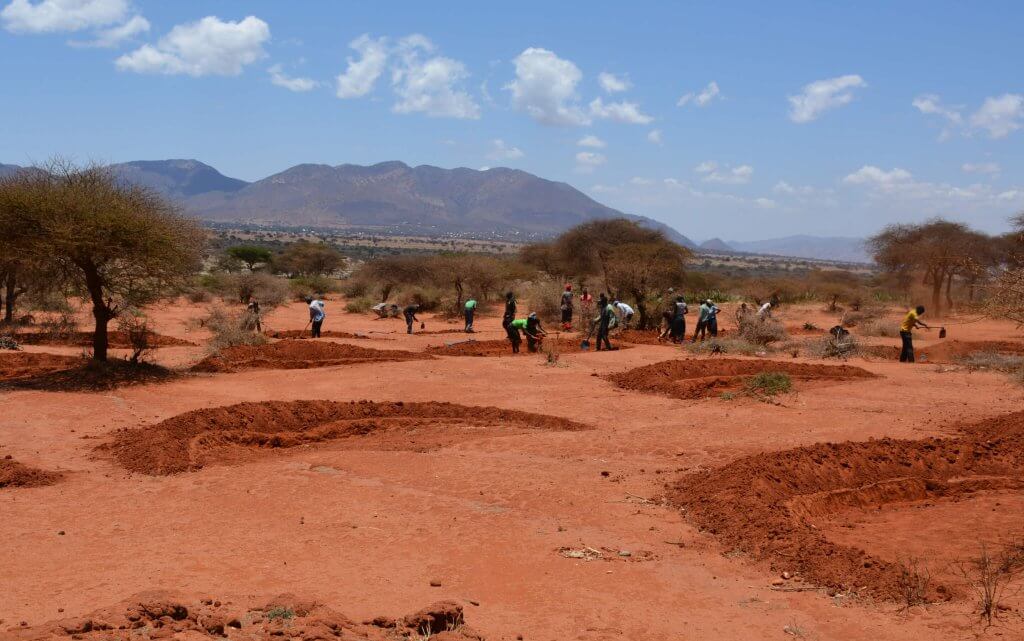
Pembamoto, TANZANIA (june 2018 - june 2022)
Why the semi-
circular shape?
The semi-circular shape of the bunds is an optimal balance between the amount of water captured and the labor requirements. Water bunds are usually 2.5 meters long and 5 meters wide, which is about the size of a small elephant!
Water bunds are dug on slopes, with the ‘closed’ side of the earth smile directing downhills. This way they can capture the water running downhills. The water bunds do not only capture the rainwater, they also make sure that the water running downhills in between the water bunds is slowed down. Now the water also has a chance to enter the soil in between the water bunds.
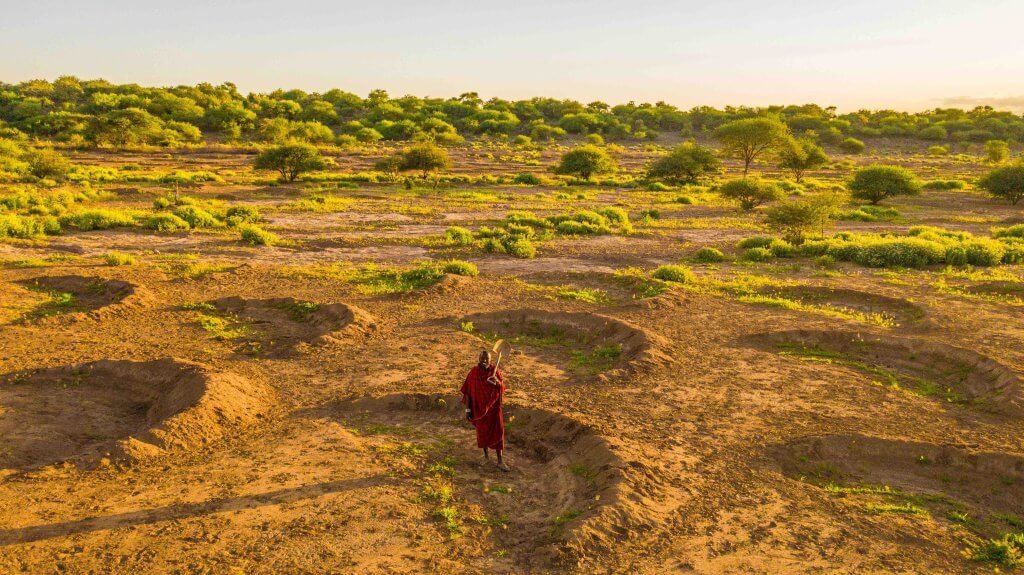
Our impact so far
Across our regreening project sites in Kenya and Tanzania, we have now dug over 660,000 earth smiles. That means that with earth smiles alone, we are regreening 81.840.000 m² of dry land.
Our projects are entirely carried out by local partners and communities. This makes them committed and gives them ownership of the project, which ensures sustainability!
THE BENEFITS OF REGREENING
Regreening degraded areas has many benefits.
Bringing back vegetation prevents soil erosion, improves the quality of the soil and the water availability and it cools down the planet by storing carbon. Vegetation does not only promote cooling of the earth globally, it also helps to cool down the environment locally. The shadow and transpiration of vegetation helps to cool down the soil.
You can now (virtually) visit our project sites!
Have you ever wondered how large water bunds are, what they look like from above and with which tools they are dug? You no longer have to rely on us to tell you this; with Our World, you can experience the answers for yourself! By clicking on the button below, you will be directly transported to one of our water bund sites in Rombo, Kenya where you can freely look around and soak up important insights into the regreening process.
Donate your own
earth smiles
Want to invest in a cooler planet? Donate your very own earth smiles!
By donating earth smiles, you ensure regreening and directly support an African farmer who digs the earth smiles. How? Go to the page linked below and choose the number of earth smiles that you want to have dug. An earth smile costs €8.
Other regreening techniques
FAQs
What is a water bund?
Water bunds – or as we also like to call them: “earth smiles” – are semi-circular shaped pits that capture rainwater.
How do water bunds help with regreening?
Water bunds are dug on slopes, with the ‘closed’ side of the earth smile directing downhills. This way they can capture the water running downhills. Now the water also has a chance to enter the soil in between the water bunds. This results in vegetation growing in – and outside – the bunds!
How deep and wide should a water bund be for regreening?
It varies from place to place, but bunds are generally 5 metres long and 2.5 metres wide. A single bund can help regreen an area of 124 m2 and can collect and store 2,100 litres of water!
Who digs water-bunds?
The local communities dig the bunds themselves, which gives them ownership of the project and this makes them more committed to the project. Because they are regreening their land, the project is sustainable and, therefore, good for the long term.
Can you dig water bunds anywhere?
You can not. Water bunds are only dug in areas that are highly degraded. Thereby, the area needs to be on a slope up to 15%. At lesser slopes, water bunds are also used in areas with higher rain falls. Within our projects, we select a combination of the most suitable interventions for our project areas in close collaboration with our local partners.
